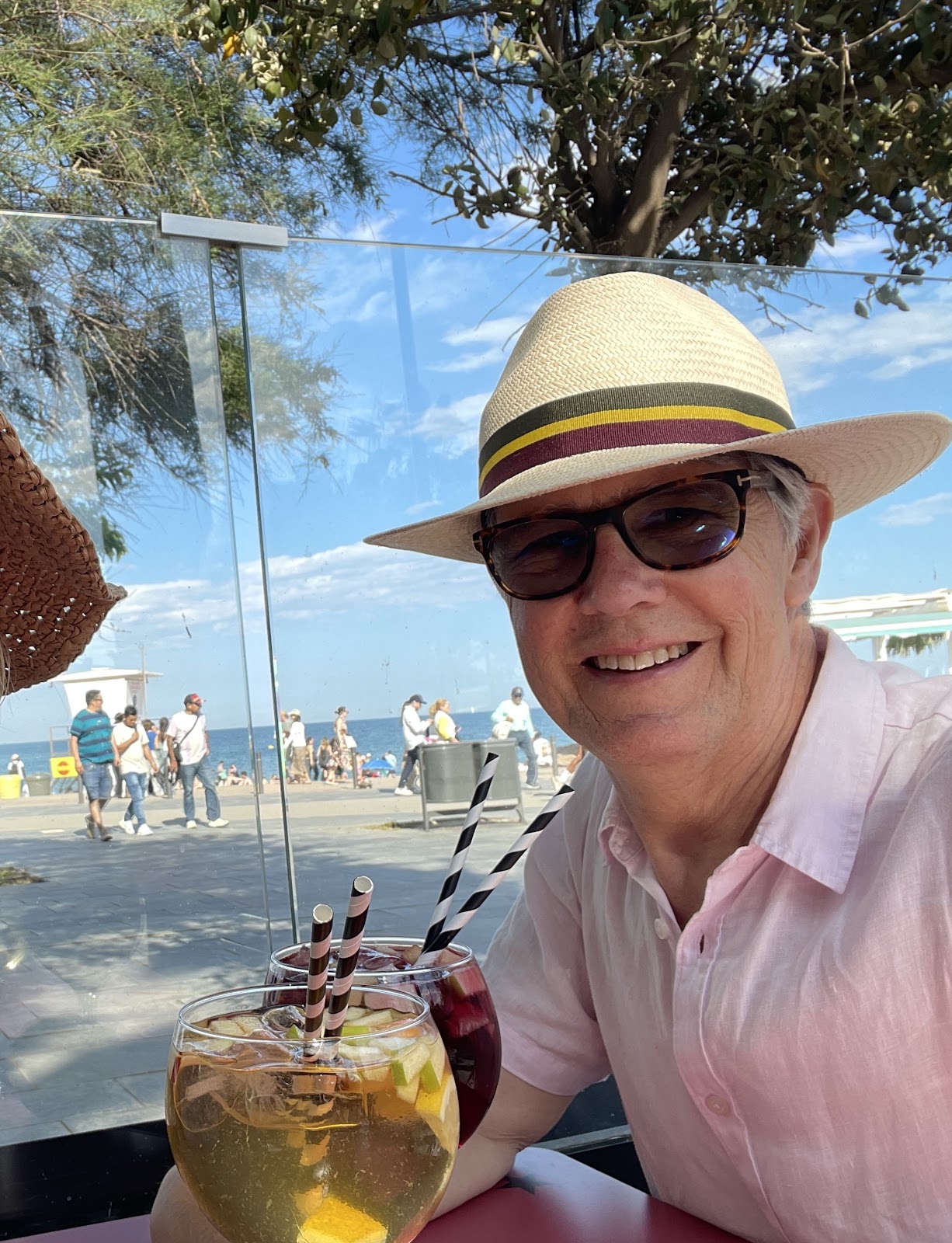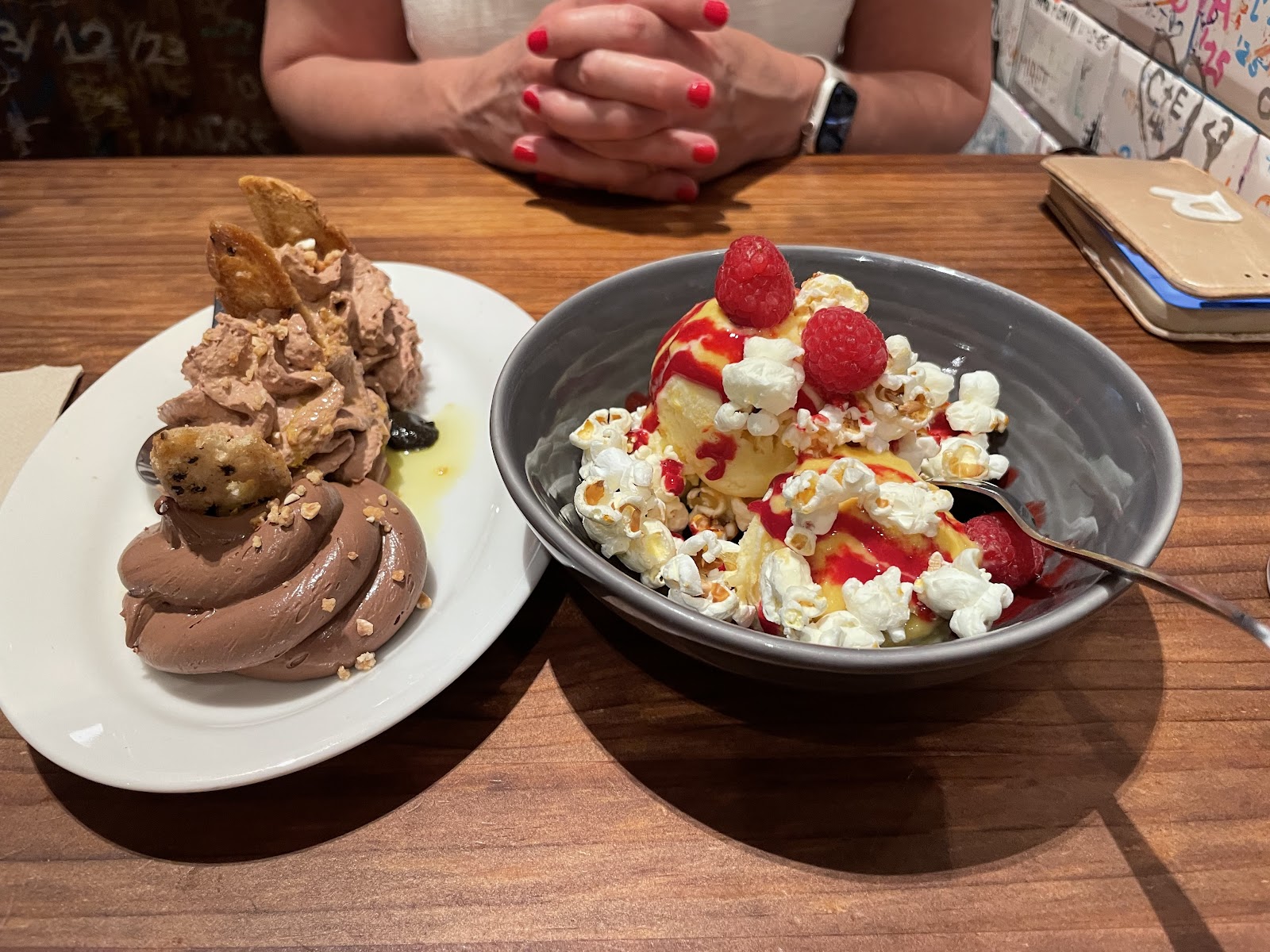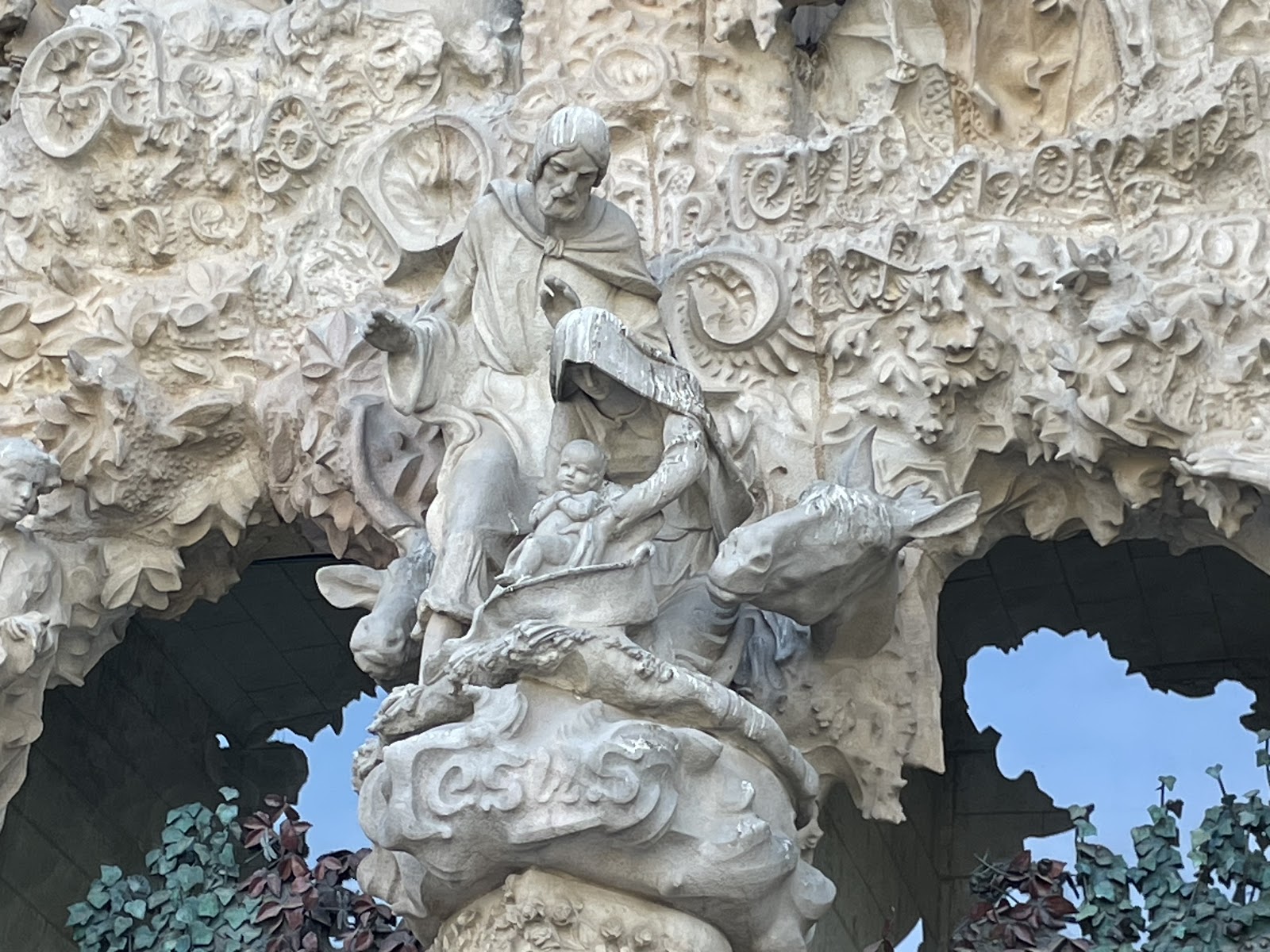Tapas At Last!
Barcelona
The last city of our tour was Barcelona, on the Catalan coast of north-eastern Spain. This is Spain's second-largest city and again has an interesting history, although rather different from the Andalusian cities we had visited in the past few days. Barcelona was a city hardly known in Britain until 1992 when it hosted the Olympic Games which propelled it into the spotlight, but it is a fantastic place and this is the one we shall have to visit again. We barely scratched the surface of this fascinating place. Before 1992 it had no beach, just docks and quayside, and tourists all went to the Costa Brava a few kilometres south. For many of us, Barcelona is just a football team and the most amazing Christian Church ever designed which has been under construction for well over a century, the Basilica of the Holy Family, Sagrada Familia.
On the Tuesday morning in Córdoba our coach transferred us to the railway station where we boarded a through RENFE high-speed train direct to Barcelona Sants. Another coach took us to our hotel ... while our luggage made its way slowly by van and arrived several hours later. Fortunately, although the weather was not quite as hot and sunny as it had been in Andalusia, it was warm enough and we could manage without our luggage for the afternoon and evening. Once checked in, our rooms being ready incredibly early, we set off for a walk down to the beach: this was about a mile or so and not undertaken lightly, but it was very good exercise after sitting on a train all morning and several days of guided tours involving shuffling around from place to place. Like, say, London, Roman Barcelona occupied a small walled site, and the medieval city broke through the Roman wall and occupied a rather larger walled site. Population growth and regional prosperity in the nineteenth and twentieth centuries led to an enormous planned expansion into the surrounding countryside, planned on a grid street pattern and with a large variety of modernist archtitecture, almost all of high quality and excellent design.
Our walk to the sea was therefore dead straight until we reached the marina full of expensive "yachts" (some of them I'd have called "ships"!), when we made our way around its rim until we came to the beach. There were many people sitting on the soft sand: people were handing our blankets for the purpose - I assume there was a charge but it was not obvious - but we were not staying and declined the offer. After that long walk we were in search of sangria and after declining it at a bar on the beach we went to another nearby where it was half as expensive ... in tourist resorts one does have to be careful!The route back, of course, was slightly uphill and we decided to try the Metro for much of the way back to our hotel. Always fun to try these things in new places: we'd used a bus in Madrid and would try the Metro here. We walked to the nearest stop, Barceloneta, which happened to be on a direct line to one of the nearest stops to the hotel. Now, how to buy a ticket ... I had brought some cash with me but intended to pay contactless using my Apple Watch, having left my credit card and most of the cash in the safe in our hotel room in order to minimise loss in case of pick-pockets. The ticket machine had a variety of language interfaces and charges a flat fare for a single trip, so choosing a couple of these was straightforward and simple, but paying was more problematic. A member of staff appeared out of nowhere like a fairy godfather and advised that we'd have to insert a card; the machines could not read contactless. So I started again and inserted cash, and behold: two tickets were printed! Taking care to get the correct platform for where we were going we made our way down and boarded a jam-packed train bound for the city centre and beyond. Of all the underground railways I have used this one was the most similar to London, with frequent long trains and with crowds! We had to stand the whole way but younger passengers took pity on us and moved so that we could lean against the side: there were fewer poles than in London and no hanging straps. This was a quick and efficient way of travelling and we were soon back at our room for a quick freshen-up before setting off for our evening meal.
We had tried all the Spanish specialities that had come to mind, and that we had thought we might like, but had yet to try tapas (or "tapes" in Catalan - we found that Spanish was not a lot of use here when it came to reading signs, although the people understand and can speak Spanish). We had asked for advice at the hotel reception and had been recommended La Pepita, just along and across the street, and that was where we tried. It was great: English-speaking staff and some wonderful food to share, and the prices were very reasonable. Customers were encouraged to write graffiti on the walls and we were given pens to make our mark - not that I really expect anyone to read it among the thousands and thousands of others! The following morning we had our final guided tour of our holiday, by coach and on foot around the historic core of Barcelona, including a quick look at the outside of the Cathedral and of St Mary of the Sea, and of the little streets where craftspeople's shops have largely given way to expensive boutiques and gift shops as people have retired. We passed some modern art galleries, notably the Picasso Museum - a return to Barcelona is going to be necessary! We were taken by coach through the modernist grid-iron extension of the city. Very little art deco there, but quite a lot of art nouveau. We drove round the Sagrada Familia which has a definite art nouveau feel to it but whose construction began much earlier. It is as much a monument and museum to its architect Antoni Gaudí as it is a place of prayer and worship. There is no point in attempting to describe this building, you simply have to see it for yourself: I hope to publish a video on YouTube soon to tide you over until you get there. Meanwhile here are some stills. Most of the sculptures which tell the story of Jesus (as well as Mary and Joseph - his family), are on the outside and we spent a lot of time looking at the Nativity façade before entering and at the Passion façade after leaving the building. But inside the light through the windows was breathtaking, as was the interior design.Back at our hotel room we prepared for the last dinner of the tour, which was included, with all drinks, at a farmhouse restaurant, Can Travi Nou, on the edge of the city, to which we were taken and brought back by a small coach. As ever, like all the included dinners on this tour it was excellent. This time we were all at one table and we had a chance to say farewell to our three American friends who had joined us in Madrid and would be leaving the hotel early in the morning for their flight home.
The meal consisted of a shared first course, a sort of tapas, and it was vital to be disciplined and bear in mind that the main course and dessert were still to come!
It was a great "last supper" and, still being in Spain, meant we were late to bed again!
Homeward via Paris
And so we waited together. The wait was easy in the company of people we had come to know over almost two weeks, and so we said our farewells on the last leg as we crossed Kent on our way to St Pancras International, having been served our light meal as soon as we had left Paris.
On arrival at St Pancras International we all gathered on the platform for the last time and then went our own ways, most of us to a variety of Premier Inns around the area; in our case this was the Euston one, adjacent to St Pancras Church. Of the three Premier Inns we have used in this area, this is not one to which we shall wish to return; while the bed was as comfortable as ever, there was no air-conditioning (or, rather, there had been but it failed "years" ago) and so it was too warm to sleep well. I think Kings Cross will be the one to use in future! The following morning we met our son for breakfast on his way to work and then parted ways so that I could get back for a baptism and a wedding while my wife awaited the end of school to collect some grandchildren to bring home later. So I waited in the lounge at Kings Cross for the 13:03 for Bradford Forster Square which I was taking as far as Peterborough. It would be a tight connection at Peterborough so I did not buy my tickets onward to Stamford until I had got there and could be confident of catching the train - otherwise I'd have a taxi home from there. However, the train from London was in good time and I bought my ticket to Stamford as it drew into the platform; I was straight in the lift and as I made my way across the footbridge the Cross Country train to Stamford was just coming in. Luggage stowed I sat down and booked my taxi home from Stamford station.
As you might imagine, it is going to be a busy weekend, so I am completing this on the train home so I hope you can manage without the description of my arrival in Stamford and my taxi ride home because I must upload this as soon as I get there!
Adiós!




















































